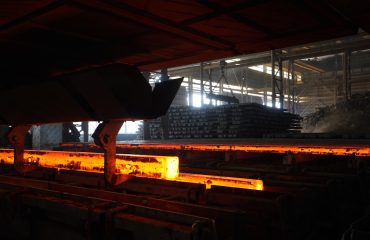In today’s rapidly evolving business landscape, stagnation is a death sentence. Organizations that thrive are those that embrace a culture of continuous improvement – a mindset that prioritizes ongoing learning, adaptation, and optimization. This isn’t just about tweaking processes; it’s about embedding a philosophy of constant betterment into the very fabric of the organization. This post delves into the core principles and practical strategies for fostering a thriving culture of continuous improvement, ultimately leading to increased efficiency, innovation, and employee engagement.
1. Understanding the Foundation: What is Continuous Improvement?
Continuous improvement, often associated with the Japanese philosophy of Kaizen, is more than just a buzzword; it’s a holistic approach to organizational development. It’s about making small, incremental changes over time, rather than relying on large-scale, disruptive overhauls. This iterative process fosters a culture of learning from mistakes, identifying areas for improvement, and implementing solutions. The key lies in the consistent pursuit of perfection, recognizing that there is always room for enhancement. It’s about empowering every member of the organization to identify and address inefficiencies, fostering a sense of ownership and accountability. This differs from traditional approaches which might involve periodic, large-scale reviews, often leading to disruption and resistance.
2. Cultivating a Growth Mindset: Empowering Employees for Improvement
A successful culture of continuous improvement hinges on a growth mindset. This means fostering an environment where employees are encouraged to embrace challenges, view failures as learning opportunities, and persistently seek self-improvement. This requires leadership to actively promote psychological safety, where individuals feel comfortable voicing concerns, suggesting improvements, and taking calculated risks without fear of retribution. Training programs focused on problem-solving, critical thinking, and data analysis can significantly contribute to this. Regular feedback sessions, both formal and informal, are crucial for recognizing achievements and identifying areas for growth. Furthermore, providing opportunities for professional development and skill enhancement demonstrates a commitment to employee growth, reinforcing the value of continuous learning.
3. Implementing Practical Strategies: Tools and Techniques for Improvement
Several practical tools and techniques can facilitate continuous improvement. Lean methodologies, such as 5S (Sort, Set in Order, Shine, Standardize, Sustain) and Kanban, streamline workflows and eliminate waste. Six Sigma focuses on reducing process variation and improving quality. Root cause analysis helps identify the underlying reasons for problems, enabling the implementation of targeted solutions. Data-driven decision-making, facilitated by the use of key performance indicators (KPIs) and data visualization tools, provides objective insights into areas needing improvement. Regular process mapping exercises can reveal bottlenecks and inefficiencies, paving the way for streamlined processes. The choice of tools and techniques should be tailored to the specific needs and context of the organization.
4. Measuring Progress and Celebrating Successes: Tracking and Recognition
Tracking progress is essential to ensure that continuous improvement efforts are yielding tangible results. This involves establishing clear metrics and regularly monitoring them. Regularly reviewing KPIs, analyzing data, and celebrating milestones are crucial for maintaining momentum. Public acknowledgment of achievements, both individual and team-based, reinforces positive behavior and motivates further improvement. Sharing success stories across the organization inspires others to contribute their ideas and actively participate in the continuous improvement process. Creating a culture of recognition and appreciation is vital for sustaining employee engagement and fostering a sense of collective accomplishment.
5. Leadership’s Crucial Role: Leading by Example and Fostering a Culture of Improvement
Leadership plays a pivotal role in establishing and sustaining a culture of continuous improvement. Leaders must lead by example, actively participating in improvement initiatives and demonstrating a commitment to ongoing learning. They need to create a vision for continuous improvement and communicate it effectively throughout the organization. This involves setting clear expectations, providing the necessary resources, and empowering employees to take ownership of the process. Leaders should also foster a culture of open communication, where feedback is actively solicited and acted upon. Regular training and coaching sessions for managers on continuous improvement methodologies are crucial for ensuring that they can effectively guide and support their teams in their improvement efforts. Ultimately, leadership’s commitment and active participation are essential for creating a sustainable culture of continuous improvement.
By embracing the principles outlined above, organizations can transform their operational efficiency, boost employee morale, and drive sustainable growth. Continuous improvement isn’t just a program; it’s a journey, a commitment to ongoing learning and adaptation that ultimately leads to a more resilient and successful organization.
Tags: Continuous Improvement, Kaizen, Lean Management, Process Improvement, Organizational Culture




